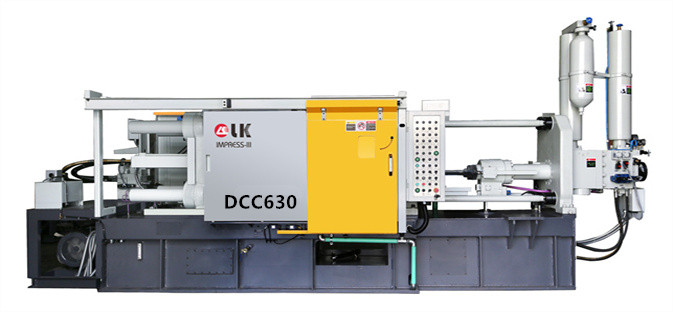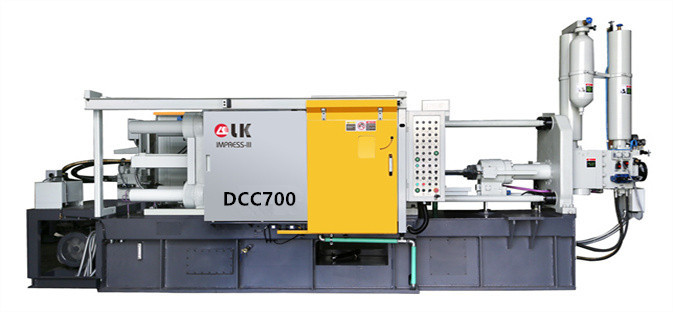Why is Die Casting So Expensive?
LK Die Casting Machine / 2024-07-16 13:58:59
Die casting is a molding process widely used in the manufacturing industry that uses high pressure to inject molten metal into a mold to produce high-precision,
high-strength metal parts.
However, the high cost of die-casting often makes companies discouraged. This article will explore the reasons for the high cost of die-casting in detail to help
users gain a deeper understanding of this process.

1. Equipment and mold costs
The equipment and molds required for die casting are the main sources of cost.
High-pressure die-casting machines are expensive, ranging from hundreds of thousands to millions of yuan depending on the tonnage and function.
In addition, the manufacturing cost of die-casting molds is high because the molds need to be made of high-strength steel and require precision machining and heat
treatment.
2. Material costs
The metal materials used in the die-casting process, such as aluminum, magnesium, zinc, etc., are relatively expensive.
High-quality metal materials can ensure the performance and life of castings but also increase manufacturing costs.
In particular, lightweight metals such as aluminum and magnesium have large price fluctuations due to their unique properties and high market demand.
3. Energy consumption
The die-casting process consumes a lot of energy. Melting metal requires high temperatures, and keeping the die-casting machine running also requires a lot of
electricity. In addition, the operation of the cooling system, hydraulic system, and other auxiliary equipment also requires a lot of energy. All of this energy
consumption will be converted into production costs.
4. Maintenance and repair
Die-casting equipment and molds will gradually wear out during use and require regular maintenance and repair.
The repair and replacement of molds are particularly expensive because the manufacturing process of molds is complex and requires sophisticated equipment and
technical support.
Regular inspection and maintenance of equipment will also increase operating costs.
5. Labor costs
The die-casting process requires skilled operators and engineers, and these professionals are paid higher wages.
In particular, positions such as mold design and manufacturing, equipment operation, and maintenance require rich experience and expertise.
Highly qualified technicians can ensure product quality and production efficiency, but also increase labor costs.
6. Quality control
The quality control requirements of die-casting products are strict.
In order to ensure the accuracy and performance of castings, multiple quality inspection processes are required, such as X-ray inspection, ultrasonic inspection,
three-coordinate measurement, etc.
The application of these inspection equipment and technologies increases production costs. In addition, in order to avoid the appearance of defective products,
strict process control and high-standard production management are required, which also increases operating costs.
7. Waste disposal
Waste, such as chips, gates, overflow, etc., is inevitably generated during the die-casting process.
These wastes need to be recycled, and the cost of recycling is high. In addition, the scrapping of defective products will also increase production costs.
8. Process Complexity
The complexity of the die-casting process determines its high cost.
The process parameters of different materials and different products need to be precisely adjusted, and the slightest carelessness may lead to casting defects or
mold damage.
The complexity of the process and the high-precision requirements require a lot of time and resources to be invested in the die-casting production process.
9. Market competition
The demand for high-quality die-casting products in the market is large, but the competition is also very fierce.
In order to occupy a place in the market, enterprises need to continuously invest in technology research and development and process improvement to improve product
quality and production efficiency.
These investments will increase operating costs, but they are also necessary conditions for enterprises to survive and develop in competition.

Conclusion
As a high-precision and high-efficiency manufacturing process, die casting has a high cost, but its wide application in the automotive, aerospace, electronics and
other industries show that its high cost is worth it.
When choosing a die-casting process, enterprises need to consider equipment, materials, energy, maintenance, manpower, quality control and other factors to make
the best production decision.
Understanding these cost components will help enterprises better control production costs and improve market competitiveness.
For more info, you can refer to: https://www.youtube.com/shorts/JLX410QV_kw
Contact LK Egypt to learn more info about the die-casting machine
LKAGENT OFFICE DCM
Address: Industry Zone, South of Port Said Kebly, Egypt
https://www.zazdiecasting.com/
Phone/WhatsApp/Wechat: +86 13598704163
Mobile: +20 101 304 3317 +20 150 181 8310
Email: jack@zazmae.com ahmedmahmoud@zazmae.com
#die cast tooling
#trivalent chromate
#rapid prototype casting
#a360 aluminum
#aluminum caster
#aluminum prototype
#ideal 55 slider parts
#density of aluminum kg/mm3
#magnesium sheet metal
#parts of a metal gate
#subcontracting of screw machining for the luxury sector
#wall aluminum
#die casting tooling
#tooling for die casting
#density of aluminium in kg mm3
#clear chromate
#es casting metals
#gating material
#prototype aluminum
#sigma castings
#subcontracting of screw-machining for household appliances
#we squeeze to please machine
#aluminium gravity die casting
#aluminum part
#aluminum rapid prototyping
#nickel casting
#plunger tip for die casting machine
#rapid prototyping aluminium
OTHER CONTENT
-

2024-09-19 14:16:15 LK Cold Chamber Die Casting Machine DCC900 Locking Force: 9000KN Die Height: 400-1000mm Space Between Tie Bars: 930x930mm Shot Weight: 13.5Kg Casting Area Max:2250c㎡
More -

2024-09-19 14:11:06 LK Cold Chamber Die Casting Machine DCC280 Locking Force: 2800KN Die Height: 250-650mm Space Between Tie Bars: 560x560mm Shot Weight: 2.9Kg Casting Area Max:700c㎡
More -

2024-09-19 10:23:07 LK Cold Chamber Die Casting Machine DCC580 Locking Force: 5000KN Die Heigh: 350-850mm Space Between Tie Bars: 760x760mm Shot Weight: 6.9Kg Casting Area Max:1250c㎡
More -

2024-09-19 10:11:20 LK Cold Chamber Die Casting Machine DCC400 Locking Force: 4000KN Die Height: 300-700mm Space Between Tie Bars: 669x669mm Shot Weight: 4.7Kg Casting Area Max:1000c㎡
More

